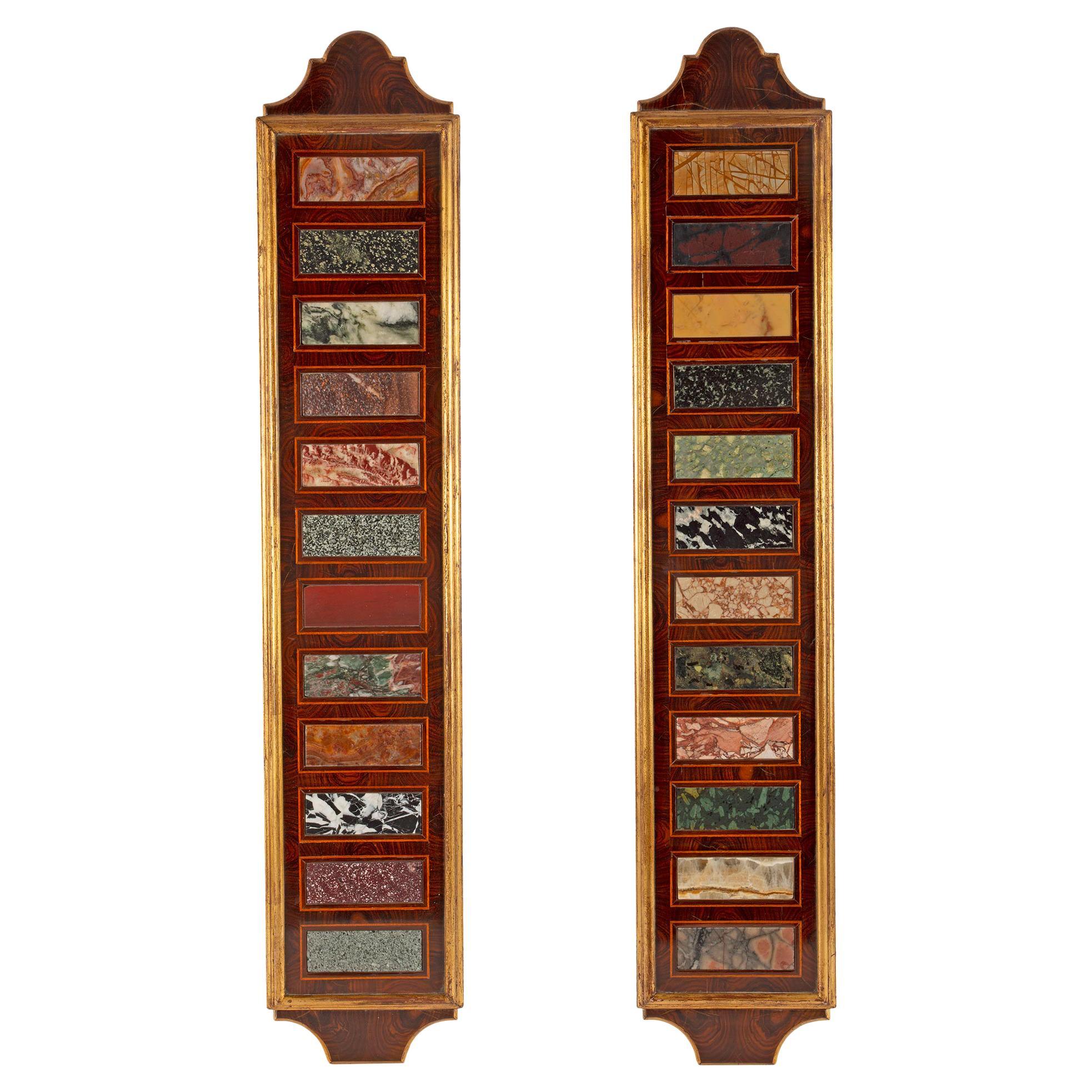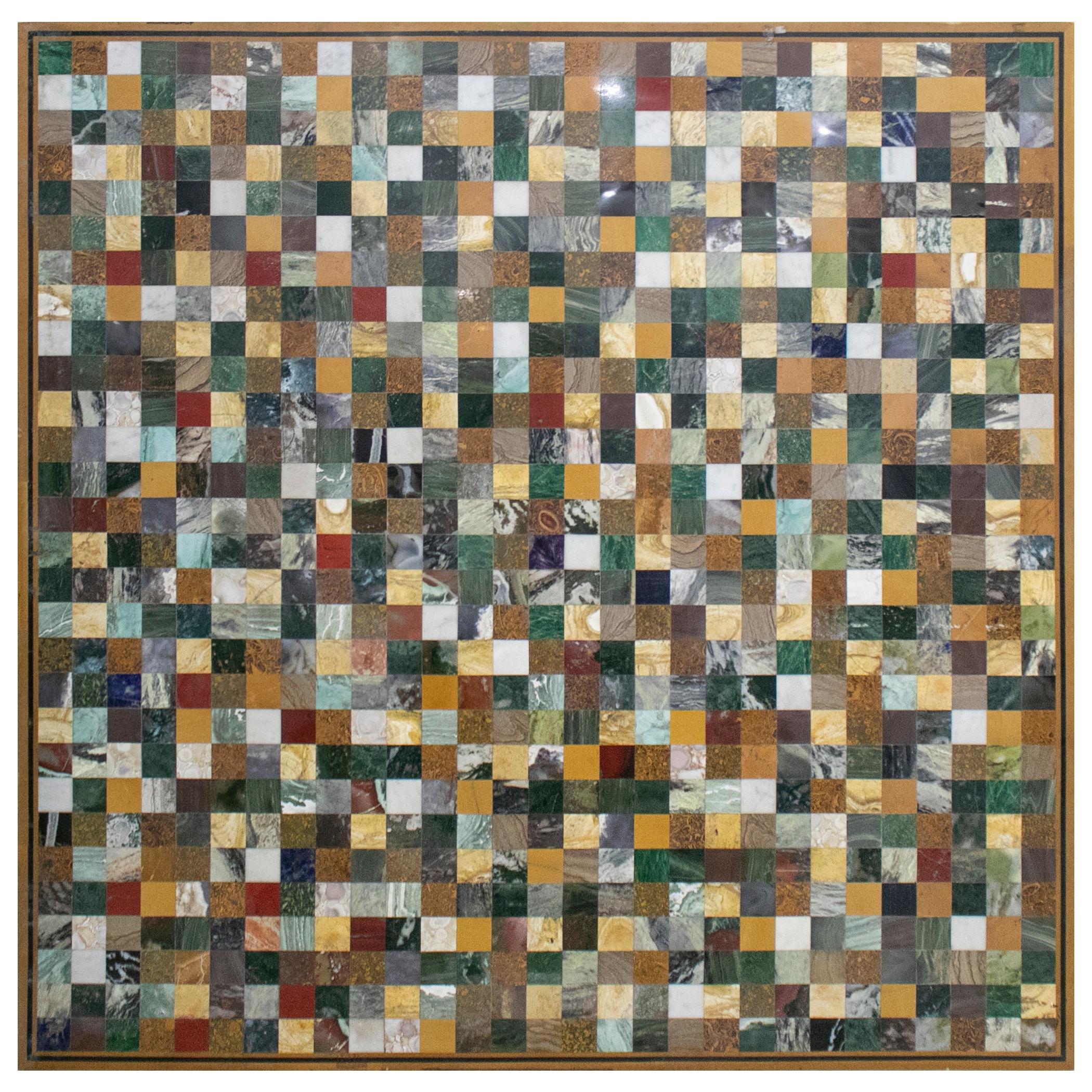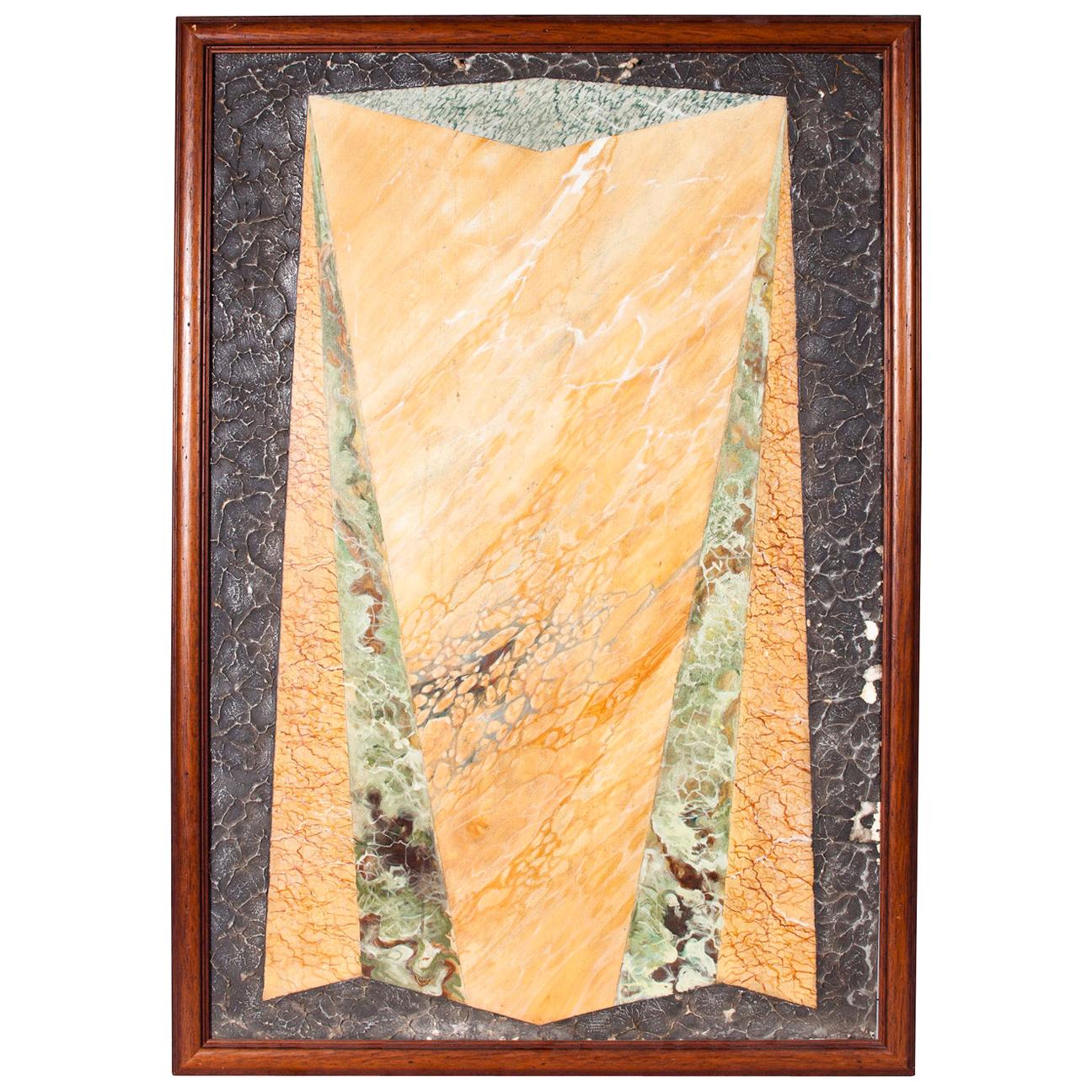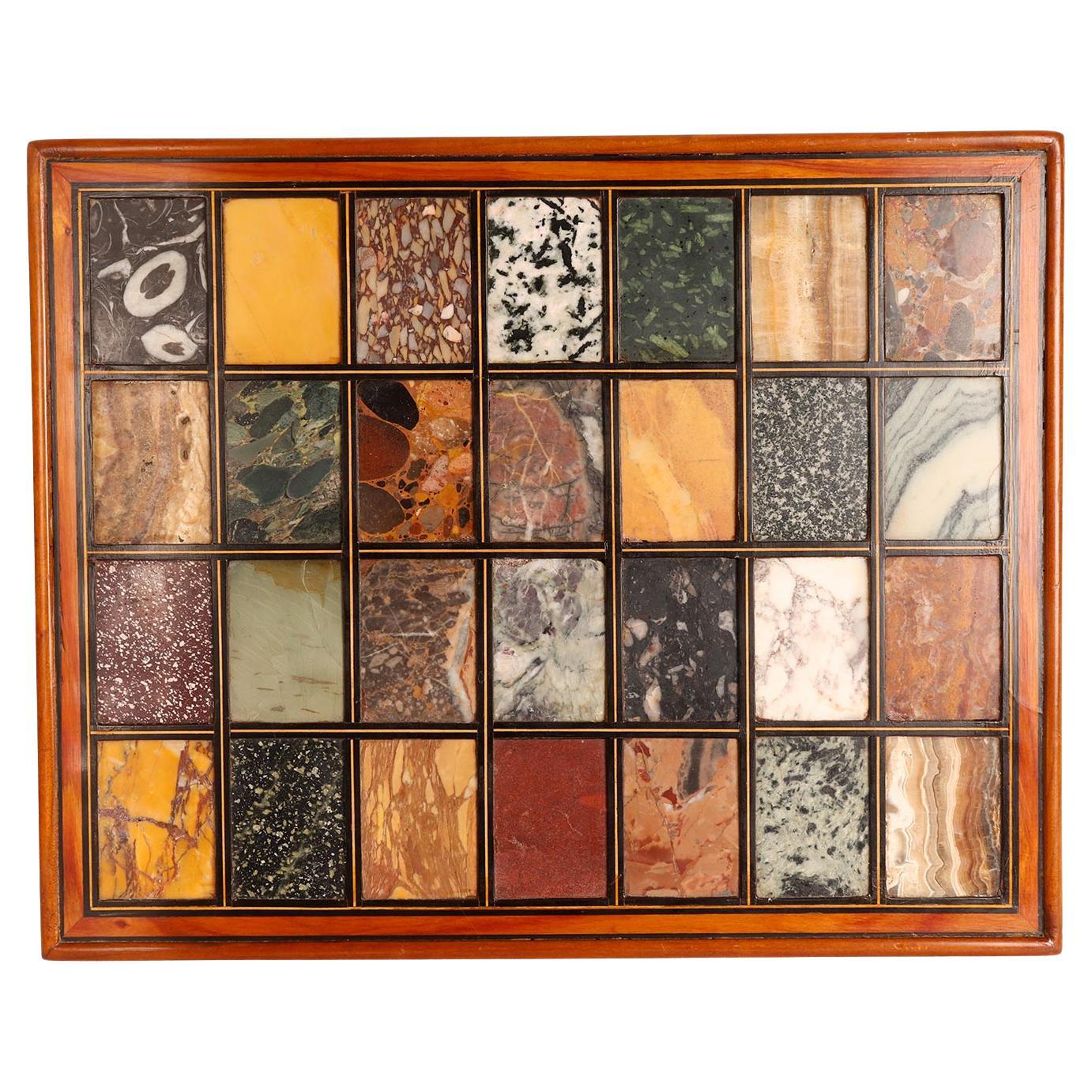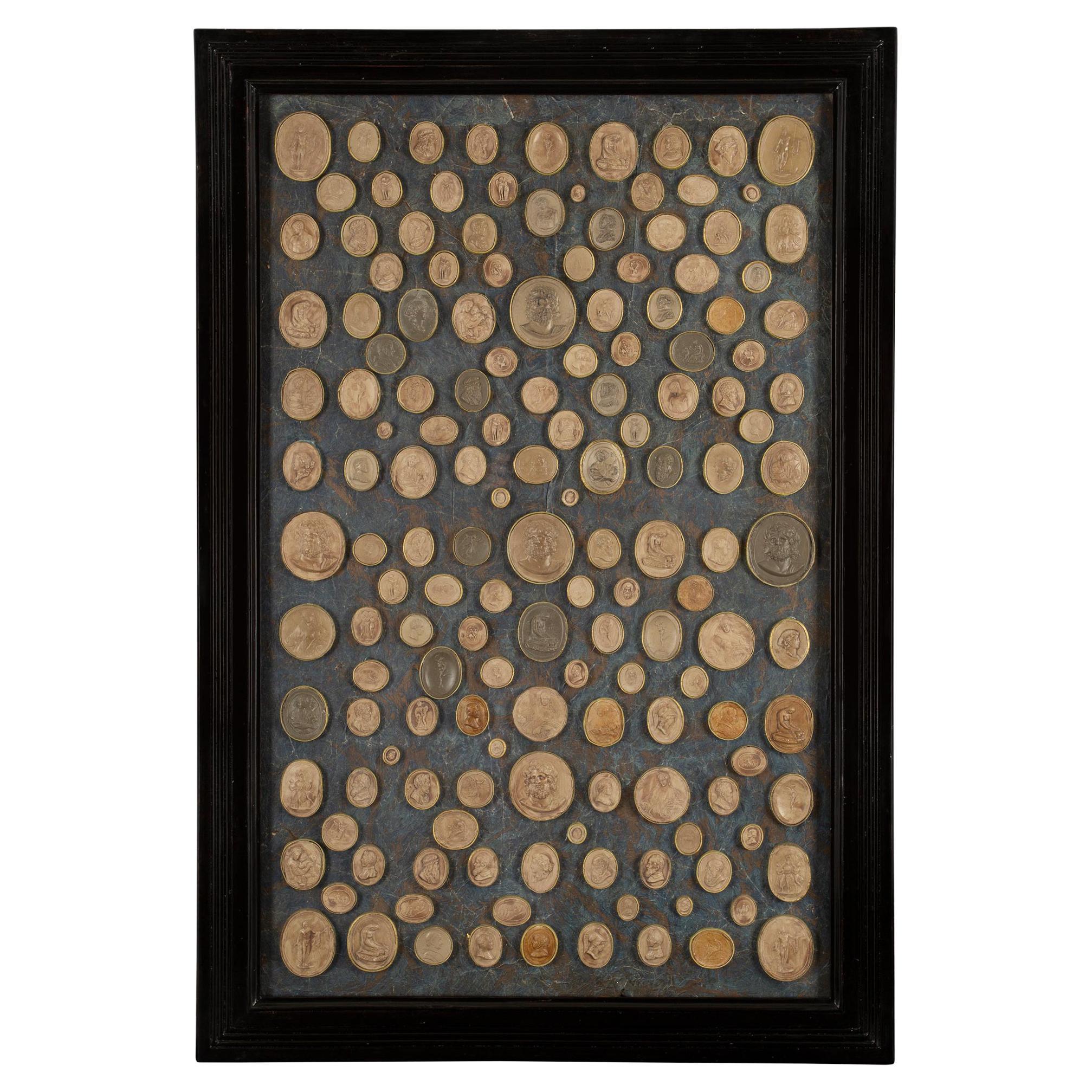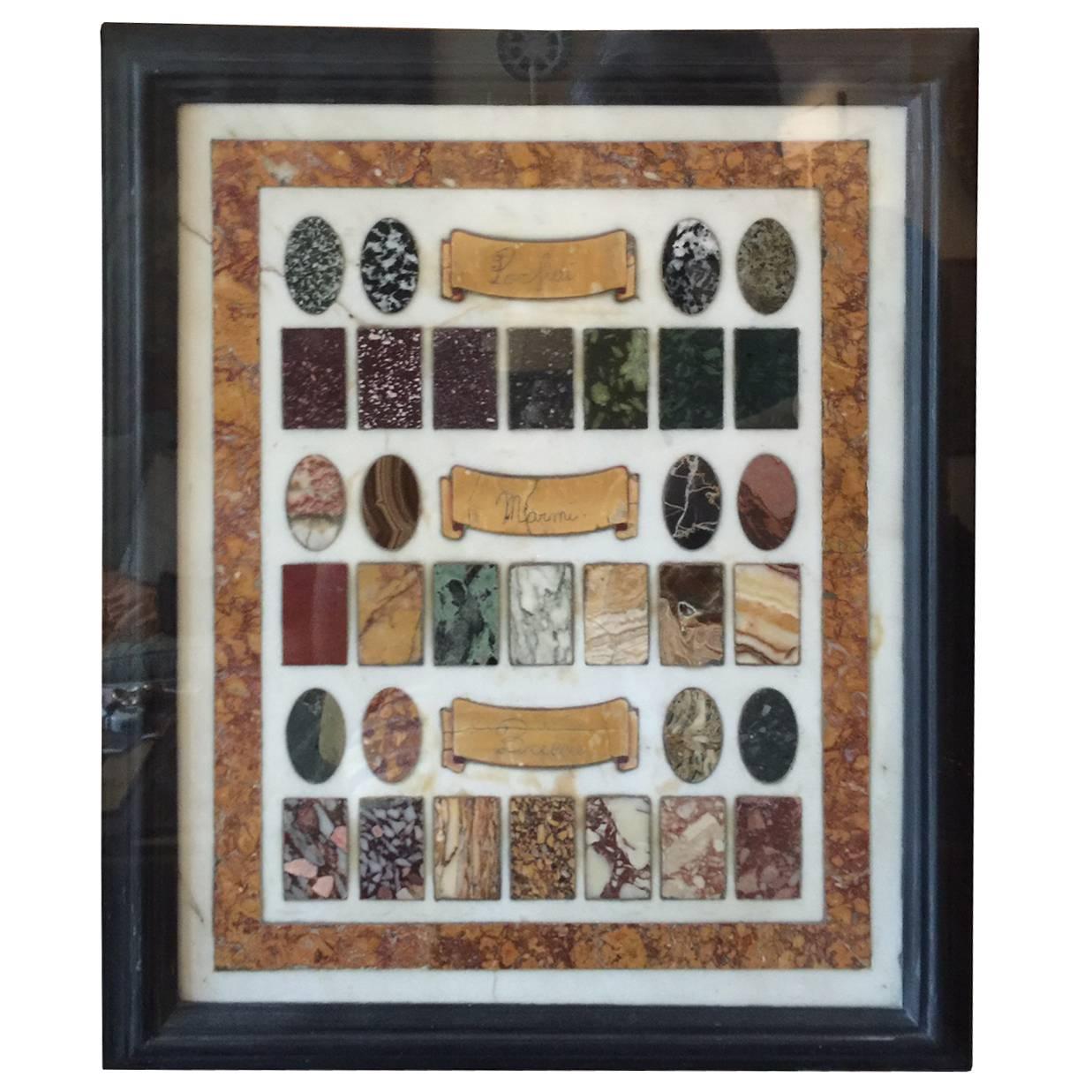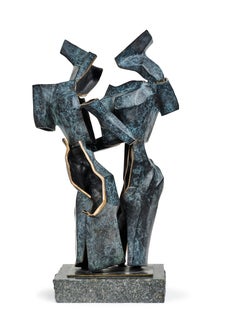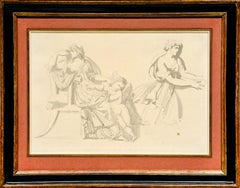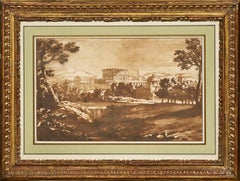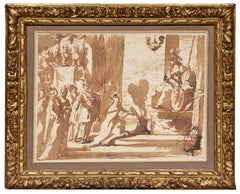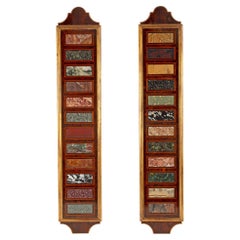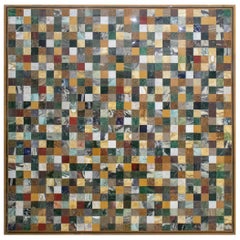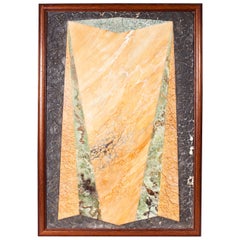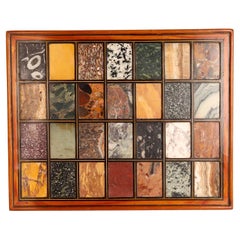Items Similar to "The collection of a lifetime" : two triptychs featuring antique marble samples
Want more images or videos?
Request additional images or videos from the seller
1 of 12
Unknown"The collection of a lifetime" : two triptychs featuring antique marble samplesEarly 20th century
Early 20th century
$10,349.88
£7,816.02
€8,750
CA$14,476.89
A$15,842.45
CHF 8,308.64
MX$189,351.02
NOK 104,854.61
SEK 97,816.70
DKK 66,653.21
About the Item
These two highly decorative triptychs feature 94 samples of antique marble, presumably collected by the same collector in the early 20th century from archaeological sites in Rome and Lazio. Their great diversity is a fascinating testimony to the splendor of interior decoration in buildings constructed during the imperial era. A meticulous study of these samples has enabled us to identify 31 different types of marble, all used in Roman times, and quarried in the most remote parts of the Empire...
1. The use of marble in Rome, from imperial Rome to the souvenirs of the Grand Tour
Vitruvius and Pliny trace the use of marble for building decoration back to the palace of Mausoleus (d. 353 BC), built at Halicarnassus. Pliny adds that Menander (Satrap of Caria at the end of the fourth century BC) was the first to introduce the use of colored marbles for wall and floor coverings in his palace. Pliny also reports Varron's testimony that Mamurra, Caesar's prefectus fabrum in Gaul, was the first to clad the walls of his house in Rome in marble.
Marble had in fact begun to be used for public buildings in Rome as early as the second half of the second century BC; at the same time, coloured marbles began to appear for paving. The discovery of Egyptian palaces, whose walls were adorned with porphyry and agate and whose floors were made of onyx according to Lucan's description, is reported to have amazed Caesar. The reign of Augustus saw the development of marble construction thanks to the influx of craftsmen from the Hellenistic world.
Suetonius indicates (Tiberius XLIX) that, in 17 A.D., under the reign of Tiberius, marble quarrying became largely, if not entirely, an imperial monopoly, which did not, however, exclude the sale of some of the marble arriving in Rome for private use, as the use of marble had become a symbol of political and social prestige. The conquest of Egypt in the first century A.D. made it possible to rule the local granite and red porphyry quarries; of all the coloured "marbles", the latter was considered the most precious . This taste for marble cladding also led to the development of "substitute marbles" : marbles of lesser quality, which were not extracted from quarries reserved for imperial use, but which could also be found in antique buildings constructed in Rome by private individuals, or used for constructions carried out in the many Roman provinces.
While ancient marbles - columns, capitals and even pieces of pavement used by the famous "Cosmati" workshops - were used in the construction of Roman churches as early as the High Middle Ages, it was only in the 18th century that a taste for knowledge and precise identification of the different types of ancient marble developed. This led to the publication in 1717 of the Metallotheca Vaticana, the first catalog of the Vatican's collections of stone specimens, which until then had remained in manuscript form.
Collections of marble specimens as varied as possible became fashionable, such as the one put together by Giovan Battista Aufreddi from 1749 for Cardinal Casanatta, which included small oval marble samples presented in a gilded cardboard framing under which the nomenclature of each sample was precisely inscribed. This collection is now housed in the Natural History Department of the Leonardo da Vinci Technical Institute in Rome.
Excavations at Herculaneum and Pompeii have also unearthed numerous antique specimens, which are often presented, sometimes mixed with Sicilian jasper, in geometric compositions produced in Neapolitan hardstone workshops and intended to adorn the tops of neo-classical consoles.
The collection we are presenting, probably assembled between the very end of the 19th century and the beginning of the 20th, represents the swan song of this taste for antique marbles, since it was assembled at a time when it was still possible to collect them freely from archaeological sites. Unlike the montages produced a century earlier, in which all the stones were cut and polished to form a compact mosaic, the various specimens presented here have all retained their individual identities and are presented as they were found, simply cleaned and waxed.
2. Marble identification
The identification we have carried out is based mainly on Gabriele Borghini's book Marmi Antichi , from which we have also drawn extensively for the first part.
In order to reconcile this identification with the two triptychs, we have indicated in the photographs reproduced in the Gallery (last two photos) the numbers corresponding to each marble variety as described in our list. Wherever possible, we have indicated after the latine (or Italian) name, the English name. Finally, we've indicated the provenance, using the indications given in Marmi Antichi.
Here is the list of the 31 types of marble we have identified:
1. Lapis Lacedaemonis - Green Porphyry from Greece (also sometimes called serpentine) – Provenance : Krokees (Greece)
2. Marmor taenarium - Rosso antico – Provenance : Cape Matapan (Greece)
3. Marmor luculleum - Africano – Provenance : Teos (Turkey)
4. Breccia bruna oolitica o nummulitica – Provenance : Asia Minor
5. Brocatellone – Provenance : Asia Minor
6. Brocatello - Brocatelle – Provenance : Tortosa (Spain)
7. Lapis hecatontalithos - Egyptian green breccia – Provenance : Uadi Hammâmât (Mons Basanites) - Egypt
8. Marmor phrygium, synnadicum or docimenium - Pavonazetto – Provenance : Iscehisar (Turkey)
9. Breccia corallina giallastra - Provenance unknown
10. Breccia nuvolata gialla – Provenance : Algeria
11. Breccia corallina - Coral breccia – Provenance : Asia Minor
12. Alabastro a pecorella minuto – Provenance : Aïn Tekbalet (Algeria)
13. Marmor chalcidicum - Peach blossom – Provenance : Chalkidiki (Greece)
14. Cipollino - Griotte from Campan – Provenance : Campan (France)
15. Porphyrites - Red porphyry – Provenance : Djebel Dokhan (Egypt)
16. Marmor numidicum - Giallo antico – Provenance : Chemtou (Tunisia)
17. Breccia gialla - Yellow breccia - Various origins
18. Lumachella pavonazza – Provenance : Austrian Alps
19. Granito bianco e nero White and black granite – Provenance : Uadi Bûrûd, Egyptian desert (Egypt)
20. Breccia dorata - Golden breccia – Provenance : Apuan Alps
21. Bigio Antico - Origin: Asia Minor
22. Marmor celticum - Grand Antique – Provenance : Aubert (France)
23. Breccia pavonazza sfrangiata di Santa Maria degli Angeli - Provenance unknown
24. Ophytes - Green granite from the siege of San Lorenzo – Provenance : Uadi Semna (Mons Ophyates) - Egyptian Eastern Desert
25. Porfido serpentino nero – Provenance : Uadi Umm Towat - Egyptian Eastern Desert
26. Terracotta
27. Alabastro del Gebel Oust - Alabaster from Djebel Oust – Provenance : Djebel Oust - Tunisia
28. Alabastro fiorito - Flowered alabaster – Provenance : Asia Minor
29. Porfido nero - Black porphyry – Provenance : Djebel Dokhan (Mons Porphyrites) - Egypt
30. Alabastro a pecorella – Provenance : Aïn Tekbalet - Algeria
31. Lumachellone antico – Provenance : Eastern Alps
32. Breccia pavonazza bruna o del Suffragio - Provenance unknown
This list illustrates the diversity of origins of the marbles used in Rome during the imperial era: Greece and Turkey, Asia Minor (10); Egypt (6), North Africa (4), France (2), Spain (1) etc. It's quite moving to think of the considerable efforts expended in bringing such a wide variety of marbles to Rome, and to put into perspective both the prosaic and miraculous nature of this collection, assembled almost two millennia later ...
- Creation Year:Early 20th century
- Dimensions:Height: 47.67 in (121.09 cm)Width: 38.13 in (96.86 cm)
- Medium:
- Movement & Style:
- Period:
- Condition:Samples of antique marble glued to natural wood panels, embedded in gilded baguettes and presented in a pair of black frames Size of each frame: 22 7/8” x 38 1/8” (58 x 97 cm).
- Gallery Location:PARIS, FR
- Reference Number:1stDibs: LU1568216580852
About the Seller
5.0
Vetted Professional Seller
Every seller passes strict standards for authenticity and reliability
Established in 2020
1stDibs seller since 2021
10 sales on 1stDibs
Typical response time: <1 hour
- ShippingRetrieving quote...Shipping from: PARIS, France
- Return Policy
More From This Seller
View AllL'Eclatée (The Fragmented One), an abstract bronze sculpture by Lili Mirante
Located in PARIS, FR
Lili Mirante (Paris, 1966 – last picture in the gallery) is a woman artist who lives and works in Paris. Born into a family of artists (her father was a renowned watercolorist), she ...
Category
2010s Abstract Geometric Abstract Sculptures
Materials
Bronze
Frieze of antique figures, a drawing by the sculptor Antoine-Denis Chaudet
Located in PARIS, FR
Faithful to the neo-classical taste, sculptor Antoine-Denis Chaudet presents us with a frieze of antique figures executed in gray wash over pencil strokes, which is likely inspired b...
Category
Early 1800s Old Masters Figurative Drawings and Watercolors
Materials
Paper, Ink, Pencil
View of an Antique City, a wash landscape by Jan de Bisschop (1628 - 1671)
Located in PARIS, FR
The attribution to Jan de Bisschop has been confirmed by the RKD with the following comment: "We base this attribution on the dark washes, the subject represented and the monogram".
...
Category
17th Century Old Masters Landscape Drawings and Watercolors
Materials
Ink, Pen
Allegory of the Treaty of Angoulême, a drawing attributed to Donato Mascagni
Located in PARIS, FR
We would like to thank Mrs. Ursula Verena Fischer Pace for suggesting the attribution to Donato Arsenio Mascagni.
We were immediately seduced by the rich tonalities of this allegory...
Category
1620s Old Masters Figurative Drawings and Watercolors
Materials
Ink
A rare neoclassical drawing by Jean-Pierre Péquignot, Girodet's friend
Located in PARIS, FR
This neoclassical frieze, executed with great meticulousness in pen and ink, is a moving and rare testimony to the work of Jean-Pierre Péquignot, an extremely talented and particular...
Category
1790s Old Masters Figurative Drawings and Watercolors
Materials
Paper, Ink, Felt Pen
Rocky Landscape with Trees and Temple Ruins a drawing by Giulio Parigi (ca 1615)
Located in PARIS, FR
This Rocky Landscape with Trees and the Ruins of a Temple is a drawing by Giulio Parigi, an eclectic and prolific artist of the Medici court. An engraver, architect, furniture and je...
Category
1610s Old Masters Landscape Drawings and Watercolors
Materials
Ink, Laid Paper, Pen
You May Also Like
Pair of Italian 19th Century Collection of Specimen Marble and Stone Wall Panels
Located in West Palm Beach, FL
A very attractive and unique pair of Italian mid 19th century collection of specimen marble and semi-precious stone wall panels. Each panel displays a selection of twelve different s...
Category
Antique 19th Century Italian Decorative Art
Materials
Marble
Square Geometric Mosaic Semiprecious Stones and Marbles Table Top
Located in Marbella, ES
Square geometric mosaic semiprecious stones and marbles table top.
Category
Late 20th Century European Center Tables
Materials
Marble
Painter's Stone Texture Sample Board
Located in Los Angeles, CA
This English paint sample board, encased in a sleek mahogany frame, showcases an array of faux marble finishes masterfully executed to mimic real textures. Utilized historically by a...
Category
Early 20th Century English Decorative Art
Materials
Wood
Selection of Antique Grand Tour Marbles, Italy, 1850.
Located in Milan, IT
A selection of antique Grand Tour marbles. In an inclined display structure made of lacquered cherry wood and profiled in black (ebony wood), a coll...
Category
Antique Mid-19th Century Italian Desk Sets
Materials
Marble
Italian 18th Century Collection of Wax Reliefs
Located in West Palm Beach, FL
A very attractive and extremely decorative Italian 18th Century collection of wax reliefs. The seals are framed within a period ebonized fruitwood mottled rectangular frame. The extensive collection of various sized busts of philosophers...
Category
Antique 18th Century Italian Decorative Art
Materials
Fruitwood
Italian Pietra Dura Sample Panel, Probably Florence, 19th Century
Located in Spencertown, NY
The samples include porphyry, breccia and various other marble examples, framed in slate.
Category
Antique 19th Century Italian Neoclassical Wall-mounted Sculptures
Materials
Marble
